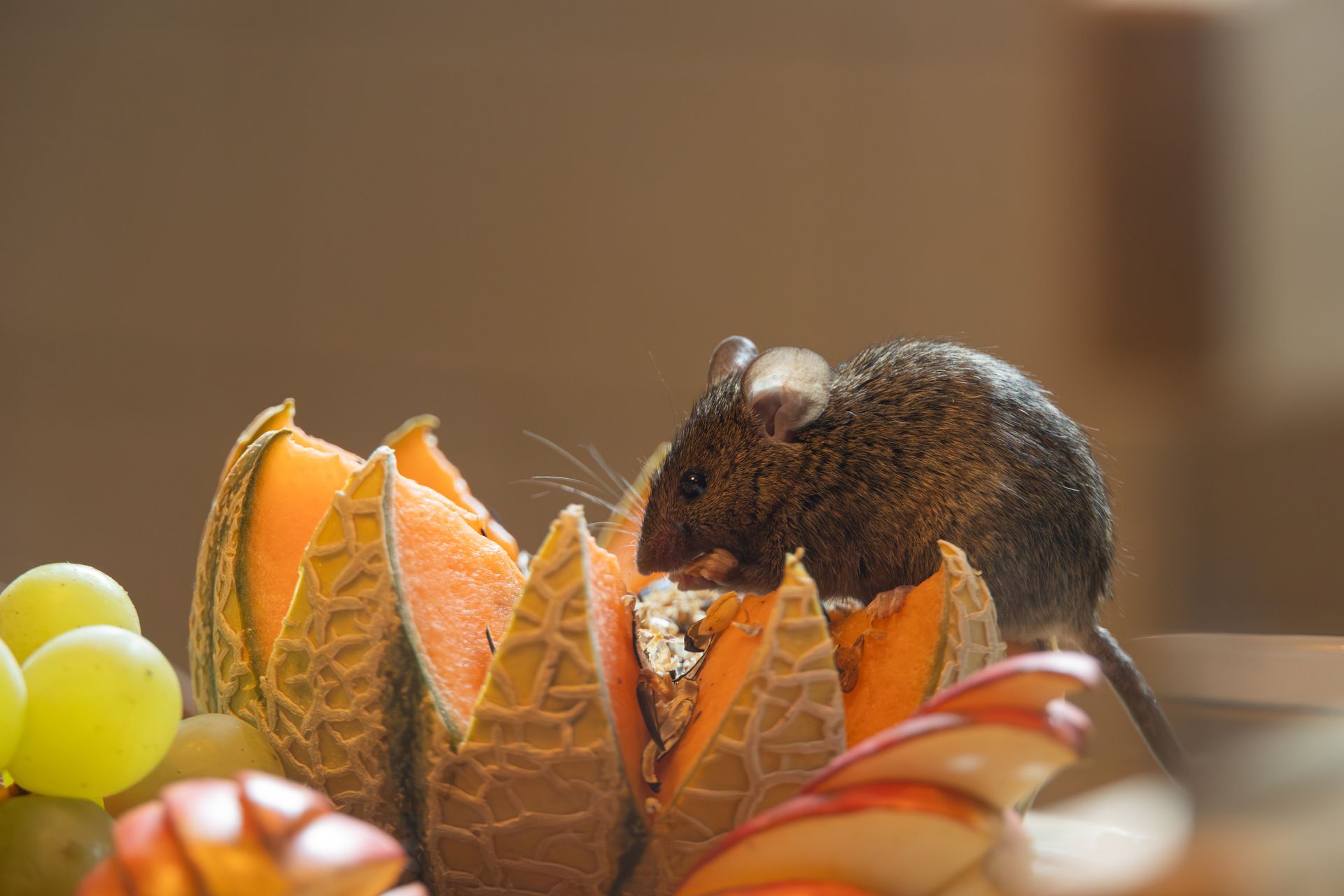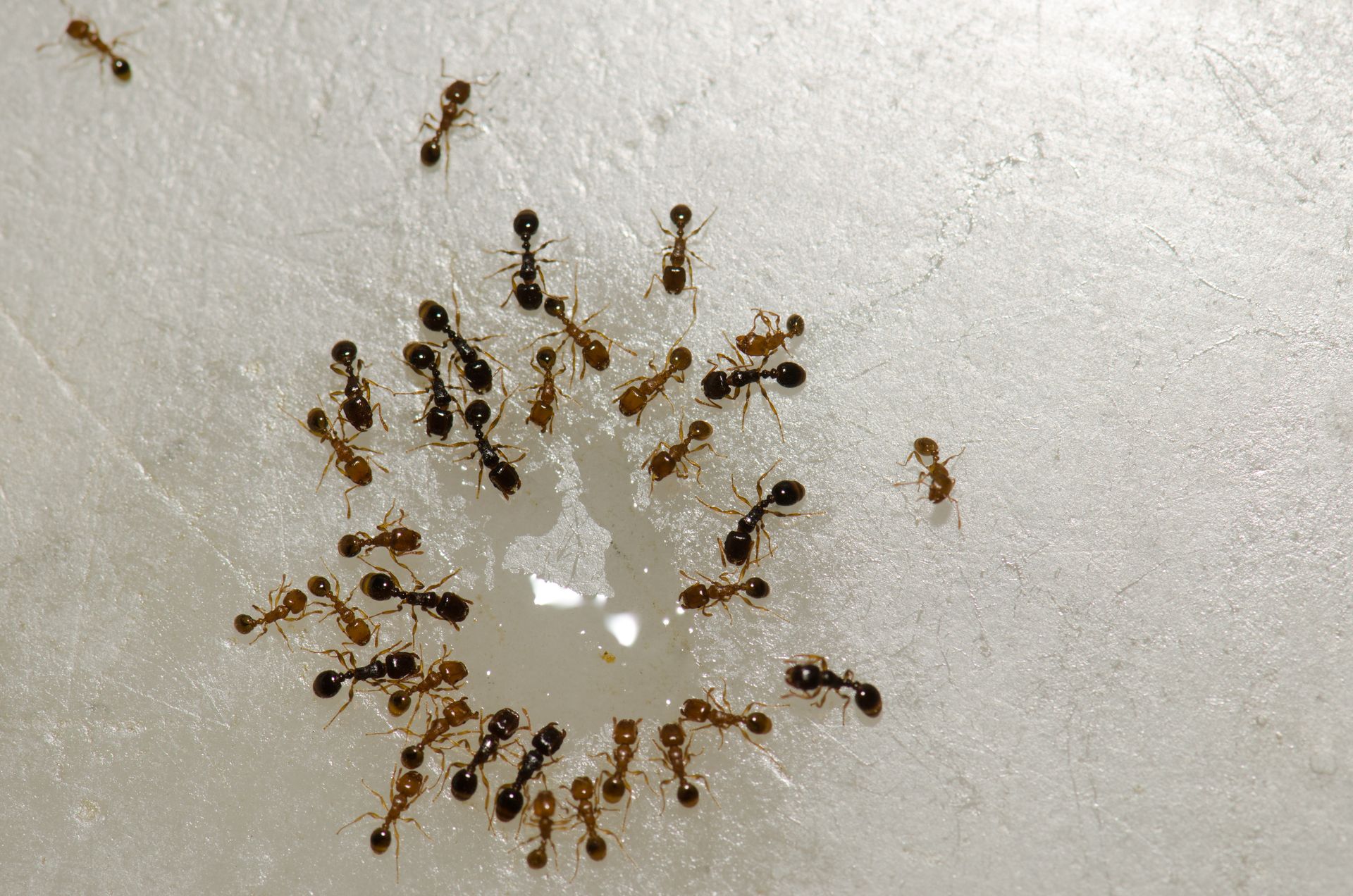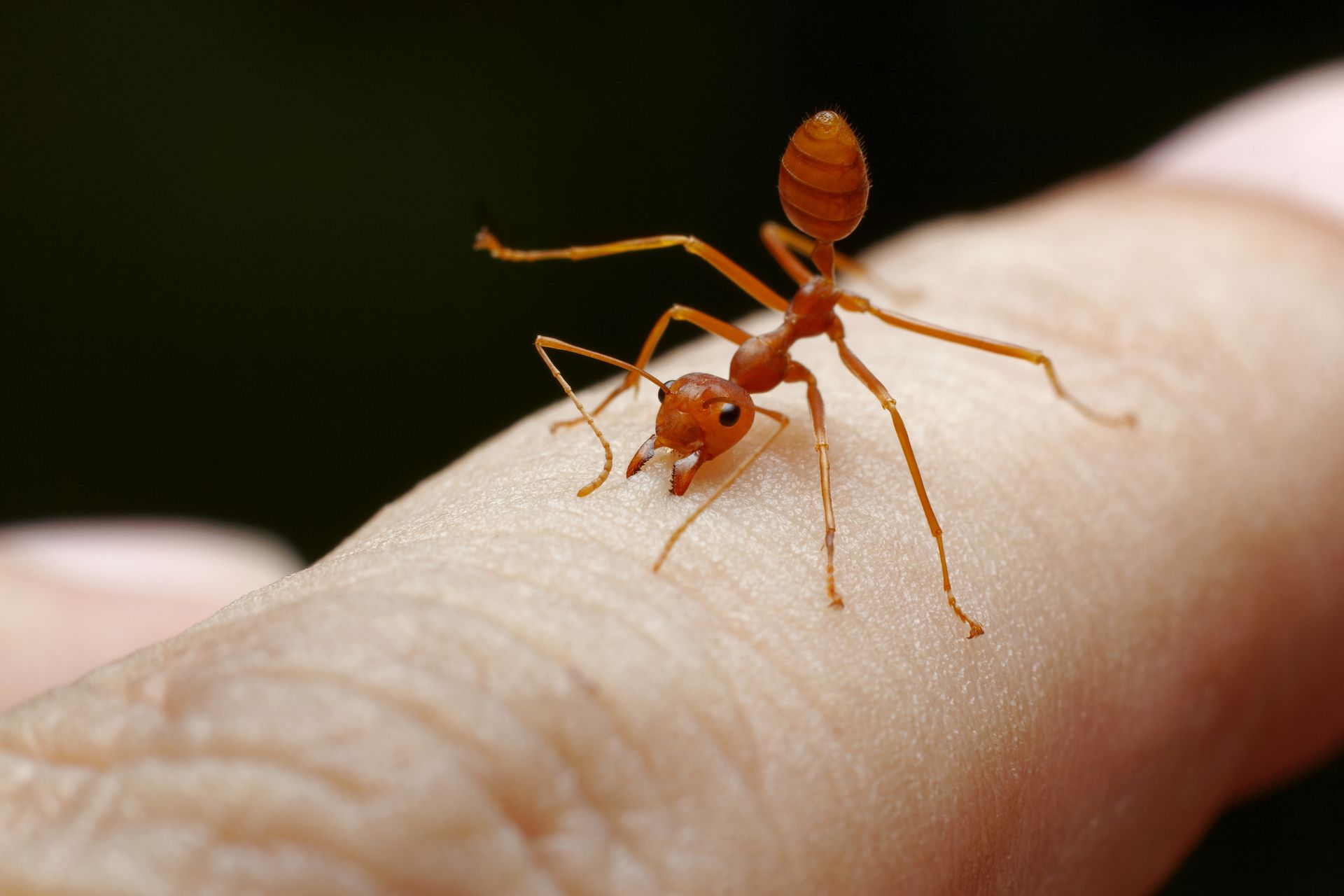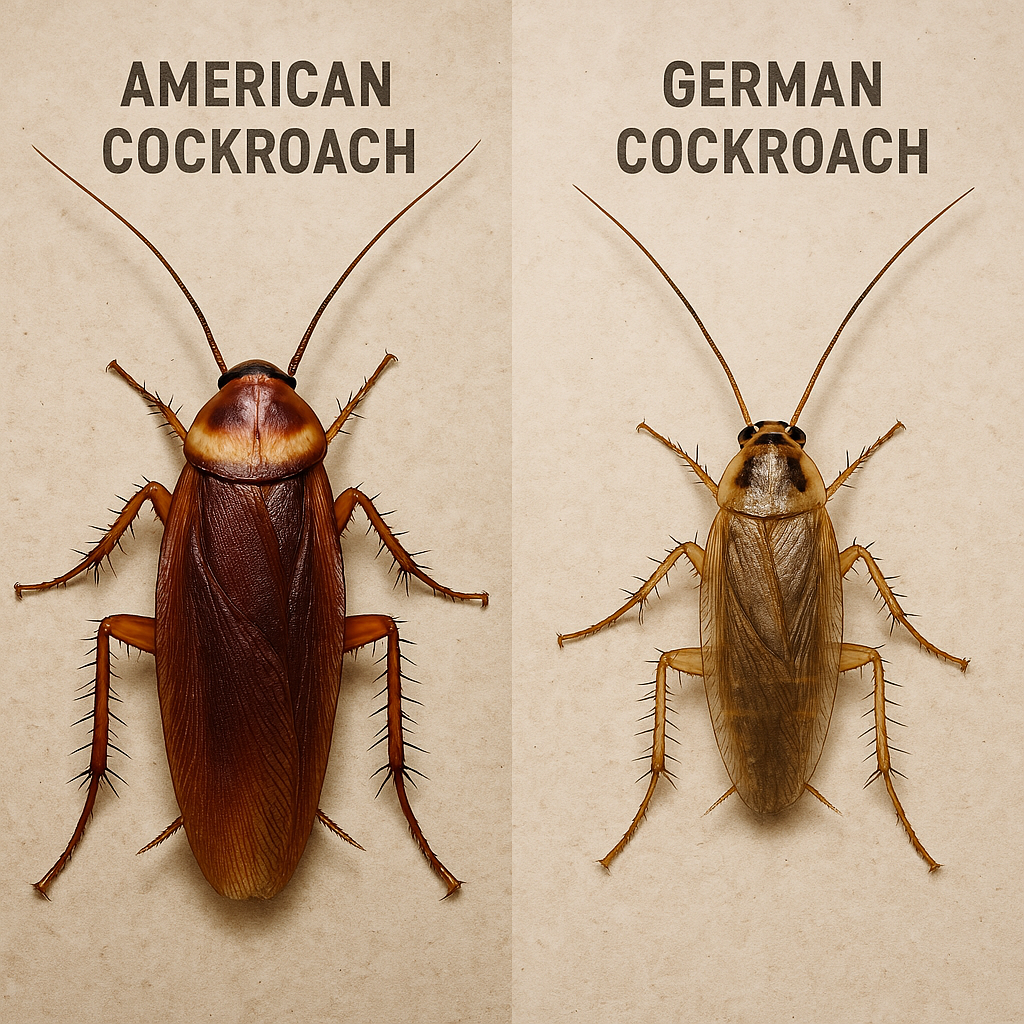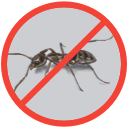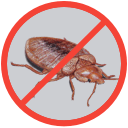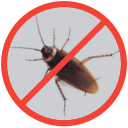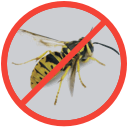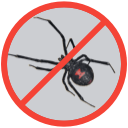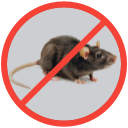How Do Ant Baits and Traps Work?
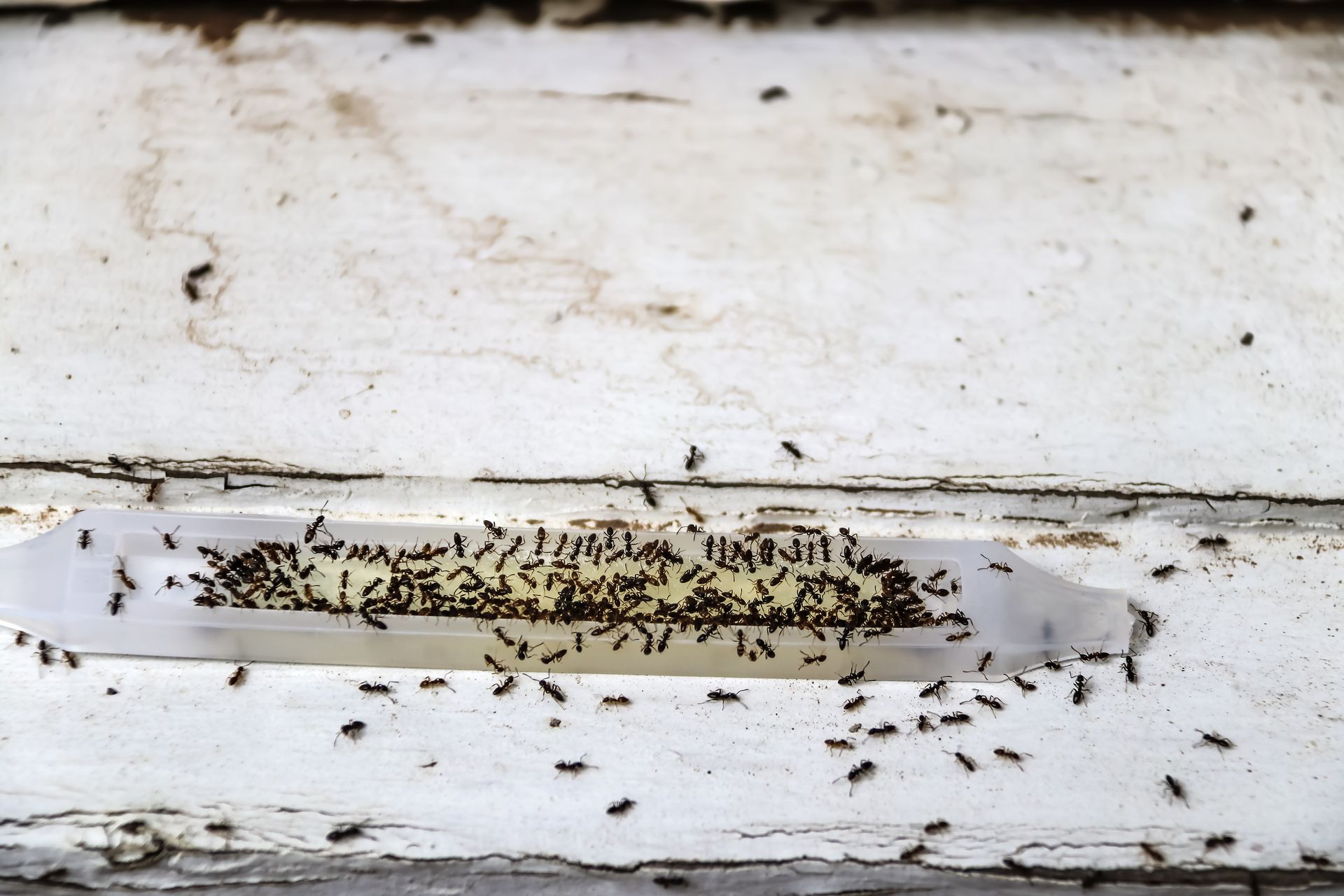
Ant baits leverage the intricate feeding networks and collective behaviors that define ant society's cooperative structure. These specialized control devices combine attractive food sources with slow acting insecticides that worker ants consume and transport back to their nests, where the toxicants are distributed throughout the colony. This targeted approach effectively eliminates entire ant populations, including the reproductive queens whose death ensures permanent colony collapse.
The fundamental effectiveness of ant baits lies in their ability to leverage the intricate food sharing networks that sustain ant societies. Rather than merely killing individual foraging ants, these systems penetrate deep into the hidden colony structure to reach non foraging members who would otherwise remain protected from surface treatments.
Why Are Ant Baits So Effective?
Ant baits exploit the remarkable teamwork and resource sharing systems that enable ant communities to thrive. Research has demonstrated that food distribution in ant colonies operates as a highly regulated network where only a small fraction of workers collect food, which is subsequently distributed to the entire population through systematic sharing behaviors. This division of labor creates a vulnerability that baits exploit remarkably effectively.
The key to bait success lies in understanding trophallaxis, a behavior that serves multiple functions beyond simple nutrition transfer. Scientific studies reveal that this mouth to mouth food exchange also facilitates the spread of chemical signatures throughout the colony, transfers beneficial gut microbes between members, and enables information sharing about food quality and availability. When contaminated with slow acting insecticides, this natural food distribution system becomes a delivery mechanism that ensures toxicants reach every level of the colony hierarchy.
Ant Baits Kill the Queen
The ultimate goal of any effective ant control strategy centers on eliminating the reproductive queens, who serve as the biological foundation of colony survival. Queen ants can live for decades and produce millions of eggs during their lifetime, with some species documented surviving over 28 years in laboratory conditions. Without successful queen elimination, surviving workers can continue foraging activities and potentially establish satellite colonies elsewhere.
Bait systems achieve queen elimination through delayed action toxicants that allow sufficient time for distribution throughout the colony before symptoms manifest. This temporal delay proves crucial because immediate acting poisons would kill foraging workers before they could transport contaminated food back to nest bound queens and developing larvae. The slow acting nature ensures that multiple feeding cycles occur, maximizing the probability that lethal doses reach all reproductive members of the colony.
Factors That Impact the Effectiveness of Ant Traps
Several biological and environmental variables significantly influence the success rate of ant bait applications. Understanding these factors enables more strategic deployment and realistic expectations regarding treatment timelines.
Type of Ants
Different ant species exhibit distinct dietary preferences that directly influence bait attractiveness and consumption rates. Research conducted on Argentine ants demonstrates that sweet-based baits remain attractive year round, while protein based formulations show peak attractiveness during spring months when colonies focus on brood development. Conversely, species such as thief ants and Pharaoh ants consistently prefer protein or grease based attractants throughout their active seasons.
Carpenter ants present unique baiting challenges because they are omnivorous foragers with seasonal dietary preferences that shift between protein and carbohydrate needs. While they do consume honeydew from aphids and plant nectars as important carbohydrate sources, their diet also includes dead insects, insect body fluids, and other protein sources. These ants can be selective feeders that may reject baits depending on the colony's current nutritional needs, requiring pest control professionals to offer both protein based and sugar based bait formulations to ensure effectiveness. Understanding species specific feeding behaviors enables selection of appropriately formulated baits that maximize consumption and subsequent colony elimination.
Size of Infestation
Colony size directly correlates with treatment complexity and success timelines. Small, newly established colonies with limited worker populations can be eliminated within a few days to one week of initial bait consumption, while large, mature colonies may require 1-2 weeks or longer for complete elimination. This extended timeline reflects the increased time required for toxicants to reach all colony members and the greater number of feeding cycles necessary to deliver lethal doses throughout larger populations.
Extra-large or complex colonies may require 3-4 weeks and multiple bait placements and potentially repeated applications to ensure adequate toxicant distribution. The presence of multiple foraging trails and satellite feeding areas in established colonies can complicate treatment strategies and require comprehensive monitoring and strategic bait positioning to intercept all active worker routes.
Number of Ant Queens
Colony structure varies dramatically between species, with some maintaining single reproductive queens while others support multiple queens within the same nest system. Multi queen (polygynous) colonies present significantly greater control challenges compared to single queen colonies because traditional 'kill the queen, kill the colony' approaches are ineffective. Successful control requires targeting the entire colony population rather than focusing on reproductive individuals, as workers can rear new queens from existing eggs and larvae, and nests may house dozens to several thousand reproductive females across interconnected underground territories.
For colonies with multiple queens, substantially larger bait quantities become necessary to ensure that lethal doses reach all reproductive individuals. In extreme cases involving super colonies with numerous queens distributed across multiple nest sites, complete elimination may prove impossible with bait treatments alone, necessitating integrated management approaches that combine baiting with other control methodologies.
Locations of Ant Colony
Nest accessibility significantly influences bait effectiveness and application strategies. Colonies established in easily accessible outdoor areas generally respond more favorably to bait treatments than those located within wall voids, underground chambers, or other protected locations that limit worker mobility and foraging range. Indoor colonies often require different bait formulations and placement strategies compared to outdoor populations.
Environmental factors surrounding nest sites also affect treatment success. Colonies located near abundant alternative food sources may show reduced interest in bait stations, requiring removal of competing food sources and potentially more attractive bait formulations to achieve meaningful consumption levels. Additionally, nests situated in areas with extreme temperatures or moisture conditions may require more frequent bait replacement to maintain attractiveness and stability.
What Types of Ant Baits Are There?
Modern ant control utilizes various bait formulations designed to accommodate different application scenarios and target species preferences. Each formulation type offers distinct advantages and limitations that influence their suitability for specific control situations.
The primary categories include liquid baits, gel formulations, granular products, and solid bait matrices. Selection criteria typically consider target species preferences, environmental conditions, application sites, and desired treatment duration. Professional pest management operations often employ multiple formulation types simultaneously to maximize colony exposure and account for changing dietary preferences over time.
Reusable Ant Bait Stations
Prefabricated bait stations provide contained delivery systems that protect bait materials from environmental degradation while facilitating controlled access by target ants. These systems typically feature refillable chambers that can accommodate different bait types and allow for easy monitoring and maintenance throughout treatment periods. Many designs incorporate tamper resistant features that prevent access by children and non-target animals while maintaining accessibility for ant sized openings.
Reusable stations offer particular advantages for long term monitoring and prevention programs. Their modular design allows for easy bait replacement as materials become depleted or degraded, while their durable construction enables repeated use across multiple treatment cycles. Some advanced designs feature transparent chambers that facilitate visual monitoring of bait consumption rates and ant activity levels.
Gel Baits
Gel formulations provide versatile application options for targeting ants in confined spaces and cracks where traditional bait stations cannot be placed effectively. These products typically contain high moisture content that attracts ants seeking water sources, while their viscous consistency prevents rapid drying and maintains attractiveness for extended periods. Gel baits can be applied in precise quantities using syringe like applicators which enable targeted placement along ant trails and entry points.
The flexibility of gel applications makes them particularly suitable for indoor treatments where aesthetics and cleanliness considerations limit the use of granular or liquid formulations. Their adhesive properties allow placement on vertical surfaces and underneath equipment where gravity would displace other bait types. However, gel baits require more frequent replacement in hot, dry conditions where evaporation reduces their attractiveness and effectiveness.
Powder Ant Baits
Powdered formulations offer unique advantages for outdoor applications where moisture resistance and extended field life are priorities. These dry formulations typically demonstrate superior stability under varying weather conditions compared to liquid or gel alternatives, though they present challenges for precise application and containment. Powder baits work best in environments where wind dispersal does not create application difficulties or non-target exposure concerns.
The loose nature of powder formulations can create unintended distribution issues, potentially contaminating areas where bait application was not intended. However, this same characteristic can be advantageous in situations where broad area coverage is desired, such as treating large outdoor infestations where individual bait station placement would be impractical.
Solid Ant Baits
Solid bait formulations, including granules, blocks, and manufactured discs, provide durable options that resist environmental degradation while offering extended field life under challenging conditions. These products typically embed active ingredients within carrier matrices that ants can manipulate and transport using their natural food gathering behaviors. Granular formulations prove particularly effective because their size and shape closely resemble natural food items that ants routinely collect.
The physical durability of solid baits makes them suitable for outdoor applications where weather exposure would rapidly degrade liquid or gel formulations. Their discrete size also facilitates broadcast application techniques for treating large areas, though this approach requires careful consideration of non-target species exposure and environmental contamination risks.
Borax Baits
Borax based formulations utilize sodium tetraborate decahydrate as their active ingredient, offering a naturally occurring mineral compound with a long history of safe household use. Commercial pest control sources claim that borax exhibits relatively low acute toxicity to humans and pets when used as directed in ant baits, while proving lethal to ants through disruption of their digestive systems. However, scientific research indicates borax has documented reproductive, developmental, and neurological toxicity concerns in humans that warrant appropriate safety precautions.
The slow acting nature of borax makes it particularly well suited for bait applications, as affected ants retain sufficient mobility to return to their colonies and share contaminated food before symptoms become debilitating. The mechanism of action involves interference with cellular energy production, leading to gradual weakness and eventual death within 24-48 hours of consumption. This temporal advantage maximizes the distribution of toxicants throughout the colony structure, increasing the probability of reaching non foraging members including queens and developing larvae.
How to Choose the Right Ant Bait
Effective bait selection requires careful consideration of target species characteristics, environmental conditions, and treatment objectives. Effectiveness requires aligning bait compositions with target species' food preferences while adapting to cyclical changes in foraging patterns and nutritional requirements throughout the year.
Species identification represents the critical first step in bait selection, as different ant species exhibit markedly different food preferences and foraging behaviors. Laboratory studies demonstrate that some species show strong preferences for sugar based attractants, while others respond more favorably to protein or fat based formulations. Additionally, dietary preferences within the same species can shift seasonally, with many species favoring protein sources during brood rearing periods and carbohydrate sources during other times of year.
Environmental factors also influence bait selection decisions. Outdoor applications require formulations with enhanced stability under varying weather conditions, while indoor treatments may prioritize cleanliness and odor considerations. The presence of competing food sources necessitates more attractive bait formulations or removal of alternative nutrition sources to ensure meaningful consumption levels.
How Long Do Ant Traps Take to Work?
Treatment timelines vary significantly based on colony size, species characteristics, and environmental conditions, though most properly applied bait systems produce observable results within 24-48 hours of initial consumption. Small colonies typically achieve complete elimination within 1-3 days, while large, established colonies may require 1-2 weeks or longer for total population control.
The initial phase of bait treatment often produces increased ant activity as foraging workers discover and recruit others to new food sources. This temporary increase should not be interpreted as treatment failure, but rather as evidence that ants are actively consuming and transporting bait materials back to their colonies. Research indicates that this recruitment behavior actually accelerates toxicant distribution throughout the colony structure, ultimately improving treatment effectiveness.
Environmental conditions significantly influence treatment timelines, with warmer temperatures generally accelerating ant metabolism and activity levels, potentially reducing the time required for complete colony elimination. Conversely, cooler temperatures or adverse weather conditions may extend treatment periods by reducing ant activity and slowing consumption rates. Proper bait placement and maintenance ensure consistent availability during periods of peak ant activity.
What Attracts Ants to Bait Stations?
Ant attraction to bait stations depends on carefully formulated combinations of nutritional attractants that appeal to specific dietary requirements and foraging preferences. Research demonstrates that effective baits contain carbohydrates such as sugars, proteins, oils, or combinations of these components, each targeting different nutritional needs and species preferences.
Successful bait formulations also incorporate chemical attractants that trigger feeding responses independent of nutritional content. These may include naturally occurring compounds that mimic ant pheromones or other chemical signals associated with high quality food sources. The combination of nutritional and chemical attractants creates powerful feeding stimuli that can override ant preferences for naturally occurring food sources in the environment.
What Kills Ants in Ant Baits?
Modern ant baits utilize several classes of insecticides specifically selected for their delayed action properties and effectiveness against social insects. The primary poisons include borax (sodium tetraborate), fipronil, hydramethylnon, indoxacarb, and avermectin derivatives, each employing unique biological pathways and toxicity characteristics.
Borax operates as an internal toxin that interferes with energy metabolism processes in ant digestive pathways. Research indicates that borax acts as a cellular toxin in insects, disrupting mitochondrial function and cellular metabolism through multiple biochemical pathways, which contributes to its effectiveness as an ant bait ingredient. The delayed onset of symptoms, typically 24-48 hours post consumption, provides sufficient time for distribution throughout colony populations before affected individuals become incapacitated.
Fipronil and related phenylpyrazole substances disrupt nerve signal transmission by interfering with chloride channel regulation, causing neurological overstimulation, muscle rigidity, and mortality. Hydramethylnon belongs to the trifluoromethyl aminohydrazone class and functions as a metabolic inhibitor, disrupting cellular respiration and energy production. These compounds typically produce symptoms within 24-72 hours, though colony elimination may require several weeks as toxicants accumulate throughout the population structure.
Environmental Considerations and Safety Aspects of Ant Baiting Systems
Ant baits generally present reduced environmental risks compared to broadcast insecticide applications, primarily due to their targeted delivery mechanisms and lower total active ingredient quantities. The enclosed nature of most bait systems minimizes non target species exposure while preventing widespread environmental contamination.
Human health risks associated with properly used ant baits remain minimal due to low active ingredient concentrations and limited exposure potential. Borax-containing formulations present minimal hazard profiles, with research demonstrating that commercial ant baits generally incorporate just 0.5-5.4% active compounds relative to total product weight.
Environmental fate studies indicate that most bait active ingredients degrade relatively rapidly under field conditions, reducing persistence and bioaccumulation potential. However, proper placement remains important to minimize impacts on beneficial insects such as pollinators that might be attracted to bait materials. Strategic placement away from flowering plants and areas frequented by beneficial species helps maintain environmental selectivity while preserving treatment effectiveness.
How to Use Ant Traps
Successful ant bait deployment requires systematic observation of ant activity patterns, strategic placement along active foraging routes, and consistent monitoring throughout treatment periods. Initial steps involve identifying ant trails, entry points, and areas of concentrated activity that indicate nearby nest locations or primary foraging routes.
Strategic placement involves positioning bait containers precisely along active foraging routes or adjacent to access points where ant movement occurs consistently. Research demonstrates that ants preferentially follow chemical trail markers left by previous foragers, making trail adjacent placement significantly more effective than random positioning. Distance between bait stations typically ranges from 10-20 feet for outdoor applications, with closer spacing required for indoor treatments or when targeting multiple trail systems.
Maximizing Ant Bait Performance and Results
Environmental management represents a crucial component of successful baiting programs, requiring removal of competing food sources and elimination of conditions that reduce bait attractiveness. Research demonstrates that starvation significantly enhances ant bait effectiveness, with studies showing that colonies starved for 48 hours achieved 100% mortality rates compared to much lower effectiveness in non-starved conditions. Removing alternative food sources is recommended as a key strategy to maximize bait acceptance and treatment success.
Timing considerations can substantially influence treatment success, with late winter and early spring applications typically achieving superior results compared to treatments initiated during peak summer activity periods. During early season applications, ant populations remain relatively small and have not yet established extensive foraging networks, making complete elimination more achievable with smaller bait quantities.
Multiple bait types may be necessary to accommodate changing dietary preferences within the same colony over time. Studies demonstrate that ant nutritional requirements shift based on colony development stages, seasonal factors, and environmental conditions. Offering multiple bait formulations simultaneously can improve consumption rates and ensure continued effectiveness even as preferences change during extended treatment periods.
Where to Use Ant Baits
Strategic placement considerations must balance effectiveness requirements with safety concerns, particularly in areas accessible to children and pets. Indoor applications typically focus on kitchens, bathrooms, and utility areas where moisture and food sources naturally attract ant activity.
Outdoor placement strategies emphasize interception of ants before they enter structures, requiring bait positioning along foundation perimeters, near entry points, and around landscape features that provide harborage opportunities. Specialized placement techniques may be required for challenging locations such as wall voids, crawl spaces, and other confined areas where traditional bait stations cannot be deployed effectively. Gel baits and other specialized formulations enable treatment of these difficult areas while maintaining safety and effectiveness standards.
Ant Traps vs Other Ant Control Strategies
Research and expert sources indicate that contact sprays produce immediate reductions in visible ant activity but rarely achieve complete colony elimination, with studies showing that only about 20% of an ant colony ventures outside where sprays can reach them. These treatments often result in temporary population dispersal and colony relocation rather than permanent control, as they fail to eliminate queens and the majority of colony members.
Bait treatments offer unique advantages for situations where nest locations remain unknown or inaccessible to direct treatment methods. Ant baits are particularly effective at targeting entire colonies, including queens, as foraging workers carry the toxicant back to nest sites and share it through trophallaxis (food sharing). This mechanism can result in colony collapse when queens are successfully targeted. However, research suggests that combining baits and sprays in an integrated approach optimizes the likelihood of successful ant treatment, with each method addressing different aspects of colony control.
Cost effectiveness analyses favor bait systems for most residential and commercial applications, as their extended duration of effectiveness reduces the frequency of repeat treatments required. While initial material costs may exceed those of spray treatments, the reduced labor requirements and longer lasting control typically provide superior economic value over annual treatment cycles.
Contact EcoGuard Pest Management if You Are Dealing with Ants
When ant problems persist despite proper bait applications, or when infestations involve aggressive species that pose health or property risks, professional intervention may be necessary to achieve lasting control. EcoGuard Pest Management provides comprehensive ant control services utilizing advanced baiting systems, integrated pest management strategies, and ongoing monitoring programs designed to eliminate current infestations while preventing future problems.
Our experienced technicians can identify ant species, assess colony characteristics, and develop customized treatment plans that address the specific challenges present in your situation. Contact EcoGuard Pest Management today to schedule a consultation and begin the process of reclaiming your property from unwanted ant invasions.
Ant Bait FAQs
Does ant bait just attract more ants?
Initially, yes. Successful bait placement typically increases visible ant activity as foraging workers recruit nestmates to the new food source. This temporary increase indicates that ants are actively consuming and transporting bait back to their colonies, which is essential for treatment success.
How long does it take for ant baits to work?
Small colonies typically show elimination within 1-3 days, while larger colonies may require 1-2 weeks or more. Initial results often become apparent within 24-48 hours as ant activity levels begin to decline.
Does ant bait actually work?
When properly selected and applied, baits can be extremely effective on smaller ant colonies. Research demonstrates that appropriate ant baits can achieve significant population reductions even without direct access to nest sites, making them among the more effective ant control tools available.
How does bait kill ants?
Baits work by combining attractive food sources with slow acting insecticides that ants consume and share with colony members through their natural feeding behaviors. The delayed action allows toxicants to reach all colony members, including reproductive queens, before symptoms develop.





